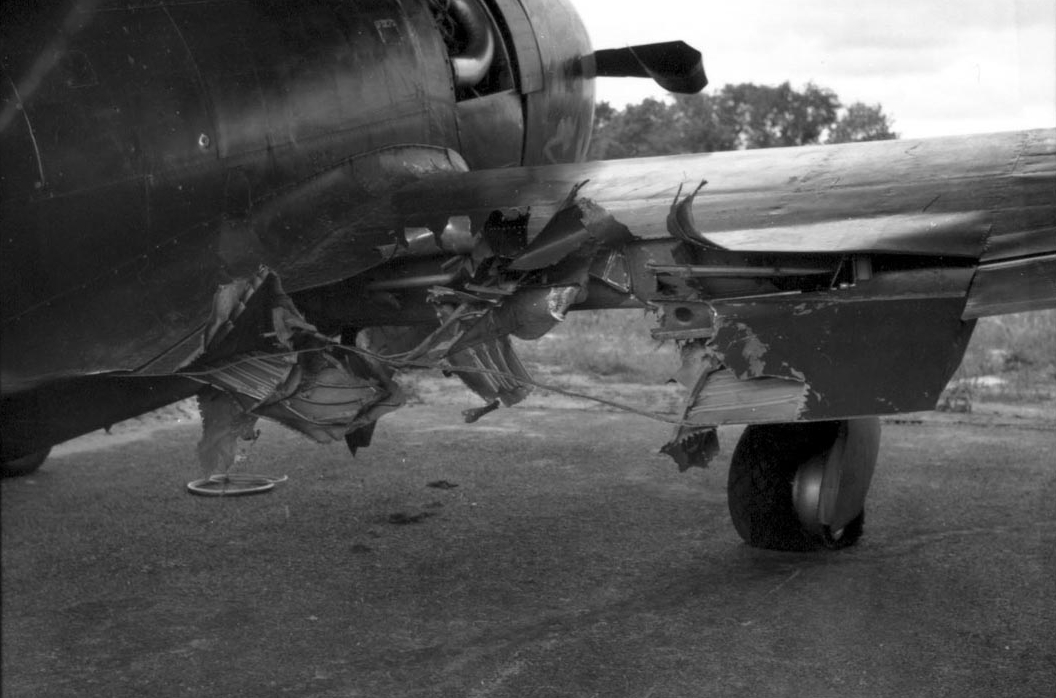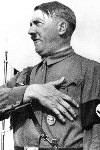The War in the Air
By Capt. Norman Macmillan, M.C., A.F.C.
The War Illustrated, Volume 7, No. 162, Page 214, September 3, 1943.
Perhaps the most important aspect of the rising air offensive of the United Nations against the European end of the Axis is the increasing scale of daylight bombing. For this we have to thank principally the foresight of American Air officers and American aeronautical and armament engineers.
Indeed, the team work of the British and Americans in the air is one of the most remarkable current features of the war. Where the Americans were least advanced (as in heavy night bombers) the British were ahead of the world. And where the British were backward (as in heavy day bombers) the Americans were ahead of the world. This happy combination of circumstances has made it possible to stage the most complete air offensive the world has yet seen. It is a condition of things which the Axis failed to foresee, a failure they must bitterly regret.
When Goering boasted that the Reich – and especially the Ruhr – would be safe from bombs he must have placed his faith in gunfire to keep the night bombers and in the (then) superior numbers of German fighter squadrons to defend the daylight sky. But nothing the German air generals ever did in the way of night bombing approached in the slightest degree the overwhelming of the defences that is achieved in every big raid by Sir Arthur Harris's Bomber Command. The guns and searchlights, massed though they are, are battered into semi-silence and blinded by the sheer weight if the air bombardment and by the smoke that rises from the smashed and burning target.
Always the Germans learn much in theory, but seldom enough in practice. Their own theory of war before they plunged the world into this second and greater global conflict was that mobile attack would defeat static defence. How then did it come about that Goering and the German air generals failed to perceive that air attack is mobile while air defence is largely static and especially so at night? My own view is that they never got as far as that in thought. They knew that they possessed great superiority in numbers of aircraft and they assumed that victory would be theirs because the enemy would never get an opportunity to recover. In June 1941 Hitler departed from the German theory by turning his forces against Russia and thereby giving us the opportunity to recover. Finding himself up against a tougher proposition than he evidently expected, he had need to embroil Japan to keep us and the Americans too busy to bother him while he remained preoccupied with his Asiatic adventure.
We never believed seriously in the daylight bombing offensive. It was thought that no day bomber forces could survive the losses that would be inflicted by modern fighter aircraft. And so we concentrated on night bombers and day fighters. This theory was vindicated in the Battle of Britain, and Hitler's forces (and theories) met their first defeat.
American Long-Range Planes Surprise Axis Air Strategy
In the Western Hemisphere, however, the conditions were so different from those obtaining in crowded Europe with it relatively small countries and cheek-by-jowl frontiers, and thinking of the wide spaces of the Atlantic and Pacific Oceans – the jump from San Francisco to Honolulu is 2,400 miles with no intervening island – and the 2,650 miles overland crossing from the east to west seaboards, and the 3,000-mile trip from San Diego to the Panama Canal Zone, not to mention the mountain and desert nature of some of the territory, American points of view coincided neither with the British nor the Germans. The Americans built long-range flying boats and long-range daylight bombers to meet their own hemisphere's requirements. The extensive nature of the operations which they had to provide for made it imperative that they should provide their bombers with the elementary defences of height and speed and powerful armament, rather than design them to take advantage of the strategic cover of night.
Bombers that operate by night are handicapped by the variations in hours of darkness in the higher latitudes throughout the year. That is why it is easier for some of our bombers to operate from the southern side of the European front, rather than the western side represented by the British Isles, and why some of the bombers taking off from Britain in the summer months for distant targets, situated several degrees to the south, fly on to land in Africa, instead of attempting to return to Britain, where their return flight would discover them in daylight over German-occupied Europe.
Hitler's early success in this war gave Germany possession of a continent and introduced conditions which were not dissimilar from those which naturally belonged to the Western Hemisphere. And American long-range, heavily armed, high-flying day bombers brought to these new conditions equipment which neither Britain nor Germany possessed, and a phase of the air war began which was unexpected by the Axis.
Daylight raids by Fortress and Liberator bombers began with short-range attacks against targets in Western Europe. The crews required operational experience. But the ability of these aircraft to fight their way was soon demonstrated, and gradually they were sent to tackle targets sited at greater ranges.
There came the raid against the Ploesti oilfields of Rumania, when 177 Liberators flew from the south of the Mediterranean up to Corfu and then turned in eastward across the Balkans. They shot down 51 enemy fighters. They flew through the balloon barrage that protected (or rather was supposed to protect) the oil region. Fortresses and Liberators bombed the marshalling yards in Rome, Naples came under their frequent assault. Hamburg felt their bombs. So did Gelsenkirchen. Liberators bombed Wiener-Neustadt's shadow factory for Messerschmitt fighter aircraft on August 14, Austria's first raid. Fortresses bombed the Messerschmitt plant at Regensburg, Germany, three days later. Mitchells and Marauders bombed the Rome airfields of Ciampino and Littorio. All these and many other raids were made by day. Heavy night bombers from Britain were raiding Milan and Turin; Mosquitoes night-bombed Berlin.
So, with the dove-tailing of American day methods and British night methods of bombing, the power of the United Nations to create havoc within the Axis-controlled ring of Europe has risen to proportions beyond the capacity of the Luftwaffe to counter.
These powerful blows are strategically fitted into the general strategy of the war, so that they aid the land offensive in Europe and Russia and the offensive against the U-boat. They are the nearest approach to the application of the theory of General Douhet, the Italian air theorist, that any nation or group of nations has yet reached. It would be the height of irony for Britain and America in combination to prove to the Axis partners that the theory of an Italian general was correct, after Germany and Italy, having tried to carry out the theory, thought that it could not be applied in practise. But war is always paradoxical. Air war is no exception.
Previous and next article from The War in the Air
The War in the Air
After the conquest of North Africa and the capture of the Italian islands of Pantelleria, Lampedusa and Lampione in the Sicilian Narrows, a strange hush descended upon military operations over all Eur
The War in the Air
It might at first sight appear that the entirely naval action in which the Scharnhorst was sunk off the North Cape (see pp. 518-520) was an incident in the war so completely maritime as to refute by i
Index
Previous article
From 'Fortress Europe' to 'Citadel Germany'
With Germany reeling under terrific blows and reverses, Hitler is preparing his last stand—or it is being prepared for him. Dr. Edgar Stern-Rubarth explains here the reactions of the bewilder
Next article
I Was There! - Catania Was a City of Chaos and Desolation
Both before and after the Germans fled from Catania astonishing scenes were witnessed in the city. As this front-line Sicilian pen-picture (dated August 6, 1943) by a Special Correspondent of The D





